Christine Valters Paintner's Blog, page 71
February 11, 2020
Monk in the World Guest Post: Elaine Pope
I am delighted to share another beautiful submission to the Monk in the World guest post series from the community. Read on for Elaine Pope's reflection "Looking and Seeing."
Christine Valters Painter calls photography "the practice of cultivating our capacity to see things as they really are" in her book, Eyes of the Heart: Photography as Christian Contemplative Practice, (Notre Dame: Sorin), 2013. 48]. I have been practicing this new spiritual discipline for a couple of years now, ever since I came across it in one of Abbey of the Arts' online retreats. I love the idea of walking slowly and waiting for an image to shimmer into my awareness. And I have found that the action of receiving a photograph, the initial shimmer, the aligning of camera lighting and image, and the final image on the screen all help me see more deeply what is "truly there." It also helps me to see what the Spirit is awakening within me, since the photography is also about the photographer and the viewer of the photograph as much as it is about the image, itself.
That interior aspect of photography became even more evident to me recently. I had just returned from a wonderful trip to Croatia, including the historic port city of Split. Split was founded during the latter days of the Roman Empire by the Emperor Diocletian (244-311CE). He is the first emperor to retire voluntarily, leaving Rome in 305 for the palace he built along the coast of Dalmatia in Spalatum, now called Split. The aqueduct he had built to supply water to the palace still stands and is still part of the waterworks for the modern city. Therefore, it is visible from the side of a major road, with no easily accessible "Photographic Moment" stopping place. So I was not able to be contemplative when I wanted to get a photograph of the aqueduct with the fields and greenhouse in the foreground. I just put the camera against the window of the bus and clicked the shutter a few times. One of those images is below.
I love this photo. The optical illusion created by the hilly terrain and the perspective of my location when I took the photo causes modern skyscrapers to seem to be standing on the top of the Roman aqueduct. I didn't notice this when I was lining up the shot. I was just trying to get a "good image" of the aqueduct. So this photograph speaks to me about looking carefully and slowly at a scene and at the photograph, taking time to see things that I missed initially. I have often found interesting juxtapositions like this one when I looked at a picture days after I took it. Once I get home, I notice things – like the buildings that seem to stand on top of the aqueduct – that I didn't notice while taking the photograph; and I can adjust contrast or crop the photo in post-processing. And then I can sit visio divina with the images – original and processed.
While I had been trained as a scientist to observe carefully for what is there and all that is there, I find the process of visio divina and contemplative photography both incorporate the additional elements of observing myself as I observe: my reactions, my reflections, my edit processes, and the still small voice of the Spirit guiding where I look, how I look, why I look, and the compassion with which I look at something or someone. Sometimes, the elements I choose to crop out of the image can be instructive spiritually – part of my shadow self speaking to me of what I do not consider "beautiful" or "necessary" or "present." So I try to keep the original version of the photograph, too. The processed photograph speaks to me of what resonated from the image, that which stirred positive emotions. Both original and processed images tell me of who I am and who I am in the process of becoming.
There is a danger lurking for the unwary in the ability to post-process images, of course. We can't actually post-process life. Yet, we can post-process our reactions to life and our decisions. Ignatius called that the examen. The examen and examining photographs are reminders to slow down and be, to slow down and look. And then, look again. And again. Observation takes time, intentionality, attention and sometimes, repetition.
You may have experienced a time when a travel experience has caused a mental shift in your own life. Did that also change your spiritual landscape?
 Elaine Pope is a spiritual director and writer on spirituality, having retired as Director of Adult Religious Formation (M.Div.) and prior to that from research (SB/MS in Materials Engineering) in the semiconductor industry for 30+ years. Her interests are formation, interfaith dialogue, and the intersection of theology and science.
Elaine Pope is a spiritual director and writer on spirituality, having retired as Director of Adult Religious Formation (M.Div.) and prior to that from research (SB/MS in Materials Engineering) in the semiconductor industry for 30+ years. Her interests are formation, interfaith dialogue, and the intersection of theology and science.
February 8, 2020
Monk in the World: Work 4 ~ Guided Meditation by Christine + Audio ~ A Love Note from Your Online Abbess
Dearest monks, artists, and pilgrims,
During this Jubilee year of sabbatical we are revisiting our Monk Manifesto by moving slowly through the Monk in the World retreat materials together every Sunday. Each week will offer new reflections on the theme and every six weeks will introduce a new principle.
Principle 5: I commit to bringing myself fully present to the work I do, whether paid or unpaid, holding a heart of gratitude for the ability to express my gifts in the world in meaningful ways.
Read the meditation or click below to listen to an audio version.
https://abbeyofthearts.com/blog/wp-content/uploads/2020/02/5-Work-Monk-in-the-World-Guided-Meditation.mp3
 Find a comfortable seated position in a place where you won't be disturbed. Begin by allowing a few minutes to center yourself and enter into contemplative space. Let yourself slowly move into silence, release whatever is pulling at your attention, with each inhale imagine you are welcoming in the gift of breath, with each exhale, surrender more deeply into this moment, letting go of what is not needed right now.
Find a comfortable seated position in a place where you won't be disturbed. Begin by allowing a few minutes to center yourself and enter into contemplative space. Let yourself slowly move into silence, release whatever is pulling at your attention, with each inhale imagine you are welcoming in the gift of breath, with each exhale, surrender more deeply into this moment, letting go of what is not needed right now.
We are going to experiment for a few moments with the energetic quality of our bodies. First, pretend that you feel exhausted and overworked, slump into your chair, feel your whole body wanting to collapse in on itself, imagine you are looking at the clock, counting the minutes until you are free again. Draw in your most difficult moments at work, and see if you can bring them present in your body, really experiencing what that is like and noticing where you feel this, being present to what is happening within you.
Then take a deep breath and shake that out.
Next, pretend that you feel vital and alive, waking up refreshed and renewed from a good night's sleep, you are strong and energized for the day ahead. Breathe this experience into your body, imaging it filling you from your toes all the way through your skull, picture a golden energy swirling through your body and a feeling of aliveness and being connected and in love with the world. Notice how this feels in your body and just take a moment to be present to your experience.
Then take a deep breath and release that experience.
Finally, see if you can find a place somewhere between these two extremes, a level of energy that might be sustainable for you over several hours. Bring yourself fully aware to what is happening in your body. Let your body embrace a place of alertness and energy and presence.
Now imagine yourself at work, perhaps at your day job, or doing dishes laundry, or caring for a loved one. Imagine that the thought has just crossed your mind that you wish this experience were over, that you want it to be later in the day when you are back home or done with this, or on vacation, whatever the story is you tell yourself when you don't want to be doing what you are doing. Then just notice what is happening in your body. Become present to your level of energy, see where you feel this in your body or where the energy seems to be blocked.
Then again, shake this out and take another deep breath.
Again, imagine yourself at work or doing chores and imagine that you are bringing yourself fully present to whatever task this is. There is nothing in the world as important as this moment, as this dish, or writing the next word in this report. Let your breath be sustained and slow. See what happens when you bring curiosity and wonder to exactly what you are doing right now. Bring an attitude of contentment to this moment, as if nothing else were needed for you to feel satisfied. If distractions arise or your mind wants to fast forward in the day, gently bring it back to this moment.
What if you were not in a hurry to finish your task, but simply allowed yourself to savor the experience as one of the gifts of being human and alive? What if you believed that this moment held the key to your inner transformation? What if you lived in a way that each moment was a practice of attention and honoring of the sacred at work right here right now?
Now notice your body and its energy. Pay attention to what you are feeling and where. Be with whatever your experience is right now.
Make a silent vow to yourself to practice this in your everyday life whenever you can, knowing that there will be many moments when you fall back into old patterns. Each time this happens, simply begin again, as St. Benedict advises in his Rule. Begin again by remembering that this moment is holy, this moment is all that is needed for an encounter with the divine.
With great and growing love,
Christine
Christine Valters Paintner, PhD, REACE
Photo © Christine Valters Paintner
February 4, 2020
Featured Poet: Arianne Braithwaite Lehn
Last spring we launched a series with poets whose work we love and want to feature and will continue it moving forward.
Our next poet is Arianne Braithwaite Lehn whose recent work is centered on prayer with strong themes of acceptance, surrender, intention, and trust. Read her poetry and discover more about the connections she makes between poetry and the sacred. Watch and lister to her read "When I Need Perspective at the Start of the Day" below.
When I need perspective at the start of the day
In this day, O God,
May I be alert.
May I be kind.
May I be compassionate.
May I be authentic,
May I be generous.
May I be forgiving.
May I be honest.
May I be brave.
May I be forgiving (again).
May I be open.
May I be creative.
May I be strong.
May I live from my intentions,
not simply my habits.
And may I hold closely in
prayer the people
you bring to my heart
and mind right now....
May I focus,
may I trust,
and above all,
may I be yours.
Amen.
Themes of Her Work
Much of my current poetry is prayer – when I direct my words toward God, I experience the opening of a unique and powerful channel within my heart and voice. My prayers are meant to help us holistically embrace the mess and beauty of our lives. There are strong themes of acceptance, surrender, intention, and trust. I view life as a pilgrimage, with each of us journeying toward the most sacred site of all – the heart within, where God dwells and our truest selves live, intertwined as one.
When I need to breathe and live into something new
Spirit of Life,
Teach me to breathe…
to gulp with desperate surrender
your life-giving energy,
not out of fear,
but because I am listening
to my primal hungers
and rejoicing in them.
The breath you give me in
this moment is a messenger,
telling me how right now
I am reborn.
I am cared for.
I am called…
Charged with the call
to channel my breath,
your life-force,
toward a gasping world.
Your breath is eternal –
never stopping,
never returning empty.
It continuously flows to
spread life and promise
if I will be a river rather than a dam.
If I listen, I will learn.
I will ride the wind of
your breath now filling me,
letting it carry me away from
my middle anchor to the
edges where I'll grow and glimpse
the purpose you have
for ever-evolving me.
Amen.
Poetry and the Sacred
My experience of the Divine is a continually expanding one. I believe God is always about bringing new dimensions, colors, hues, and ways of seeing life in this world, and that is exactly what the reading and writing of poetry does for me. It brings to life the vibrancy within our ordinary days and our everyday experiences. Poetry settles me into a kind of "soul stillness," which is where I hear God best and follow what God desires ("Be still").
Poetry helps me practice gratitude, which is one of the most foundational spiritual practices I can think of. Because much of my poetry is prayerful in nature, I'm awakened to the tender ways God is present and at work within and around me.
Poetry is not meant to be productive, and there in lies much of its sacred power for me. It centers us in the inherent, unshakeable belovedness of all God's created, and the goodness of our Creator.

Mary
A Poem for Advent
Waiting time is pregnant time.
Hold,
Hope,
Trust.
Possibilities and promise push
my soul to its outer-rim,
making haven in the uncomfortable.
What lies beyond beckons
to what grows within.
"Come…"
Creaking, groaning, stretching,
the womb grows and Hands shape my soul.
I cannot expand any further,
it hurts too much.
This rim.
It's the limit.
Then pain and grace interlock fingers,
holding me fast in perfect embrace.
I breathe into birth
and cry my
raw, new melody.

About Arianne Braithwaite Lehn
Arianne Braithwaite Lehn is a writer, pastor, and creator who is passionate about connection. An ordained clergy-couple minister in the Presbyterian Church U.S.A. and a team writer for Illustrated Ministry, Arianne is the author of Ash and Starlight: Prayers for the Chaos and Grace of Daily Life (Chalice Press), and has written for her blog (Ash and Starlight), Upper Disciplines: A book of Daily Devotions 2018 (Upper Room Books), Pause: Moments to Reflect (Passport Media), The Christian Century, Presbyterians Today, These Days, as well as the musical composition of "Ash and Starlight." Arianne lives in Wilmette, IL with her husband and children. Connect with Arianne at ArianneBraithwaiteLehn.com where she blogs and offers a weekly devotional newsletter.
Her book can be purchased at: Amazon, Chalice Press, and other major retailers.
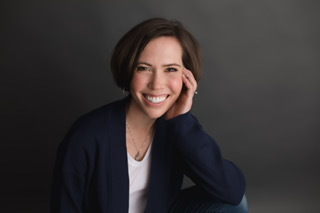
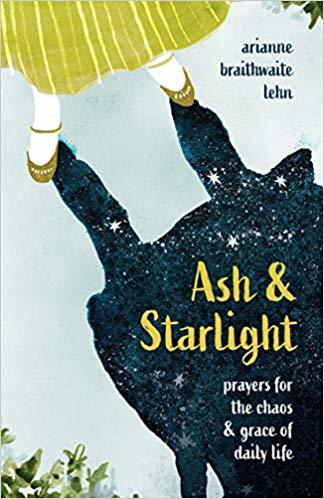
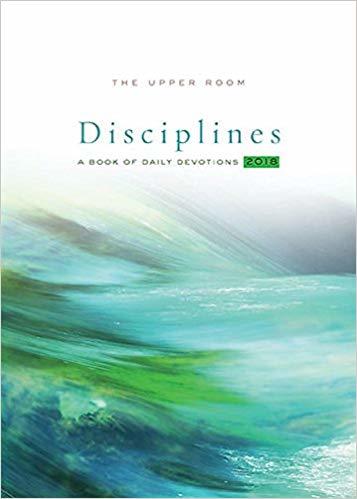
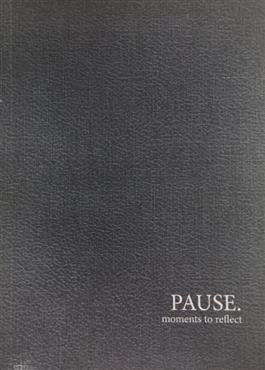

Dreaming of Stones
Christine Valters Paintner's new collection of poems Dreaming of Stones has been published by Paraclete Press.
The poems in Dreaming of Stones are about what endures: hope and desire, changing seasons, wild places, love, and the wisdom of mystics. Inspired by the poet's time living in Ireland these readings invite you into deeper ways of seeing the world. They have an incantational quality. Drawing on her commitment as a Benedictine oblate, the poems arise out of a practice of sitting in silence and lectio divina, in which life becomes the holy text.
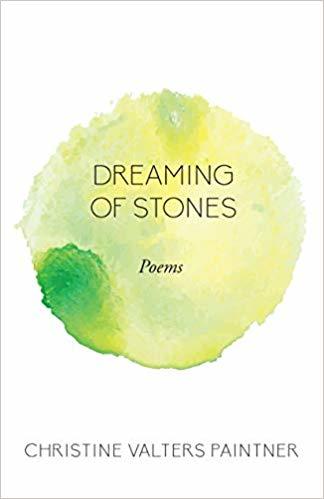
February 1, 2020
Monk in the World: Work 3 ~ Reflection by Christine + Audio
Dear monks, artists, and pilgrims,
During this Jubilee year of sabbatical we are revisiting our Monk Manifesto by moving slowly through the Monk in the World retreat materials together every Sunday. Each week will offer new reflections on the theme and every six weeks will introduce a new principle.
Read on or click below to listen to an audio version of this reflection.
https://abbeyofthearts.com/blog/wp-content/uploads/2020/02/5-Monk-in-the-World-Work.mp3
 Principle 5: "I commit to bringing myself fully present to the work I do, whether paid or unpaid, holding a heart of gratitude for the ability to express my gifts in the world in meaningful ways."
Principle 5: "I commit to bringing myself fully present to the work I do, whether paid or unpaid, holding a heart of gratitude for the ability to express my gifts in the world in meaningful ways."
We live in a culture where "work" almost seems to be a bad word. We trudge to our jobs, complain about the hours we keep, work ourselves to exhaustion, and come home and buy more things so we need to work longer hours to sustain us. For many of us, work is a way to pay the bills, and nothing more.
For others, our work may feel like a calling, but perhaps we go underpaid, underappreciated, and are moving towards depletion and burnout, especially if we are also trapped in the cycle of overconsumption the world around us lures us into. The giving that once enlivened us may be starting to wear thin, we may be feeling frayed.
But the monastic tradition invites us into a radically different perspective on work. Joan Chittister writes in her book Wisdom Distilled in the Daily that "(W)ork is fundamental and necessary and physical and holy and spiritual and creative." Fundamental, necessary, physical, holy, spiritual, creative.
And St. Benedict wrote in his Rule that "When they live by the labor of their hands, as our ancestors and the apostles did, then they are really monastics." So to be a monk means that work is integral to our lives, earning our way in the world, laboring with dignity are all essential.
This is a quote from Thich Nhat Hanh about doing household chores, and what he says applies equally to our attitude toward our work:
"To my mind, the idea that doing the dishes is unpleasant can occur only when you are not doing them. Once you are standing in front of the sink with your sleeves rolled up and your hands in warm water, it really is not so bad. I enjoy taking my time with each dish, being fully aware of the dish, the water, and each movement of my hands. I know that if I hurry in order to go and have a cup of tea, the time will be unpleasant and not worth living. That would be a pity, for each minute, each second of life is a miracle. The dishes themselves and the fact that I am here washing them are miracles! Each bowl I wash, each poem I compose, each time I invite a bell to sound is a miracle, each has exactly the same value. . .
"Each thought, each action in the sunlight of awareness becomes sacred. In this light, no boundary exists between the sacred and the profane. I must confess it takes me a bit longer to do the dishes, but I live fully in every moment, and I am happy."
The essence of what I receive from his words is that if I am incapable of showing up to my work in the world with full presence and awareness, then I will be incapable of showing up to any part of my life in this way. Work consumes so many hours of our day, that if we are always wishing for the time to be over, always dreaming about what comes later, then we are cultivating a habit of not staying present to ourselves.
What would it mean for you to bring yourself fully present to each moment of the work you do, aware of the sacredness of it, conscious of the miracles happening all around you?
And what would it mean if your work were not just a means to an end, that is a way to pay the bills, but also a practice in itself of bringing yourself present to each moment, even when the experience doesn't feel radiant and charged with meaning?
The path of the monk in the world is to cultivate this kind of relationship with all tasks and objects, they are each holy, nothing is profane when we bring the eyes of awareness and a heart of presence to what we do and how we move through the world. In the Rule of Benedict, all the tools of the monastery are considered as sacred as the vessels of the altar. Each plate and fork is holy, each object that serves us with its function worthy of reverence.
What are the sacred tools of the work you do? Is your computer a holy vessel? Is your phone a portal to the divine?
In the Rule, Benedict mentions that the monks should "not be downcast" if they need to gather the harvest. In Benedict's time much of the monk's labor was considered to be the work of slaves. And yet everyone who came to the monastery, whether wealthy or poor, shared equally in the labor. How can we find contentment in whatever situation we find ourselves?
Work was and is a holy gift. Benedict considered the opportunity to earn one's daily food and shelter to be an honorable task. Not all work feels meaningful, some of it may feel more like drudgery. And not everything that is considered work is paid labor. Even if we have a job we love, we still need to do dishes and laundry and clean the bathroom. Sometimes we have work we dread and still have to come home to the tasks of daily living. Some of us take care of children or aging parents as full-time work or in addition to our day jobs.
Just in the way the desert mothers and fathers reminded us that our cells can teach us everything, so can the work we return to day after day be a place of inner transformation. The call of the monk is to bring absolute attention to the work at hand. When we lose this attention, we also lose our freedom. When we spend our time wishing we were doing something else, we forget that the sacred is right in our midst. Ralph Waldo Emerson wrote that "Sufficient to today are the duties of today." He called us to "spend yourself on the work before you; / well assured that the right performance of this hour's duties / will be the best preparation." When we are performing a task, the monk is invited to let it be enough, all that is needed in a given moment for fulfillment and transformation. Part of the contemplative path is recognizing that growth happens in any context and that any situation we find ourselves in can offer us the fullness of grace.
We may be tempted to think that we are working now so we can retire later and finally enjoy life, but the monastic way reminds us that if we do not cultivate contentment in this moment now, we will never know how to savor life later on.
Benedictine monk David Steindl-Rast offers this invitation:
"Work, if we don't approach it consciously, will suck us into its demands. Then we become slaves, no matter how high up we are on the ladder . . . Even people who have jobs they don't like and find meaningless can still be free within them. . .by reminding themselves deliberately and often, why they do them. As long as we do work out of love for those whom we love, we do it for a good reason. Love is the best reason for our labors. Love makes what we do and suffer rise like music, like a soaring line of chant."
What would it mean for you to find freedom within the work you do and not feel trapped by its demands? What would it mean to bring love to your work?
Even in work that feels creative and rises out of our call to be artists involves period of challenging intensity. As a writer, I always find the editing process one of the most difficult aspects of the work and yet I also recognize it as one of the most valuable. Writing the words feels like grace most days, flowing with ease. When I feel blocked a long walk or some time spent cooking often is enough to shift something open. But I always encounter the most resistance to the editing process, even knowing it is so important to refine the creative work. In working with my resistance, this experience is part of my own inner transformation. As I listen for what the work needs in this stage and how it wants to come to birth in the world, I discover my own places which need releasing or ways to express my ideas with more clarity. We can engage this process in any place where we feel blocks in what we do.
Consider whether there are tasks in your life that you do grudgingly, whether working at a job you dislike, or having to care for a home and family with all of the distractions that entails, or other ordinary life demands. Then consider whether it is possible for you to remember why you do the work. Can you do it out of love recognizing that transformation occurs even there? Are there ways to bring love to things you find challenging and reframe them so that they rise like music and lift up your creative heart?
What is the love that calls you to your labors in the world? Do you need to maintain a job to earn a living? Does this work support your ability to also create and rest and dream? Does it offer shelter and nourishment to the people you love, including yourself? How might you bring more love and delight to all of the tasks you are called to?
Joan Chittister also shares these words about work: "In Benedictine spirituality, work is what we do to continue what God wanted done. Work is co-creative. Keeping a home that is beautiful and ordered and nourishing and artistic is co-creative. Working in a machine shop that makes gears for tractors is co-creative. Working in an office that processes loan applications for people who are trying to make life more humane is co-creative. . .We work because the world is unfinished and it is ours to develop. We work with a vision in mind. . . Work is a commitment to God's service."
Human work is the primary way we care for the world given to us by the Creator. Through work we help to usher in the unfolding of God's Reign among us, we have an impact on shaping the world around us. We also cultivate ways of seeing this reality already present among us. Our attention to compassion and creativity is a commitment to laboring alongside the Divine Worker in bringing a more just and beautiful world into being. The work is so large we may be tempted sometimes to despair or abandon our part, but humility reminds us to honor our gifts and limits. We are called to do something and to bring our whole hearts to the task, trusting that a greater source than ourselves weaves those tasks together.
What difference would it make if you truly believed that your work makes a difference in the world, that the world needs what you have to offer? Monastic spirituality reminds us that God invites each one of us in every moment to respond to our unique call.
With great and growing love,
Christine
Christine Valters Paintner, PhD, REACE
Photo © Christine Valters Paintner
Call for Submissions – Monk in the World Guest Post Series
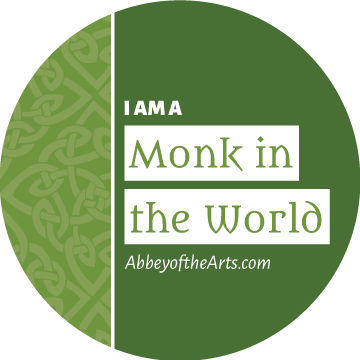 We welcome you to submit your reflection for possible publication in our Monk in the World guest post series. It is a gift to read how ordinary people are living lives of depth and meaning in the midst of the challenges of real life.
We welcome you to submit your reflection for possible publication in our Monk in the World guest post series. It is a gift to read how ordinary people are living lives of depth and meaning in the midst of the challenges of real life.
There are so many talented writers and artists in this Abbey community, so this is a chance to share your perspective. The link to the reflection will be included in our weekly newsletter which goes out to thousands of subscribers.
Please follow these instructions carefully:
Please click this link to read a selection of the posts and get a feel for the tone and quality.
Submit your own post of 700-900 words on the general theme of "How do I live as a monk in the world? How do I bring contemplative presence to my work and/or family?" It works best if you focus your reflection on one aspect of your life or a practice you have, or you might reflect on how someone from the monastic tradition has inspired you. We invite reflections on the practice of living contemplatively.
Please include a head shot and brief bio written in the third person (50 words max). You are welcome to include 1-2 additional images if they help to illustrate your reflection in meaningful ways. All images should be your own. Please make sure the file size of each the images is smaller than 1MB. You can resize your image for free here.
We will be accepting submissions between now and March 1st for publication sometime in the spring and summer of 2020 and beyond (depending on the number of submissions). We reserve the right to make edits to the content as needed (or to request you to make edits) and submitting your reflection does not guarantee publication on the Abbey blog, but we will do our best to include as many of you as possible.
Email your submission to Melinda by March 1st and include the reflection pasted into the body of your email and attach your photo(s).
We will be back in touch with you at the latest by early April to let you know if your post is accepted, if edits are needed, and/or when we have scheduled your post to appear.
January 30, 2020
Four New Poems from Christine at Impspired
I am really delighted to have four poems published at the online journal impspired! You can read them at this link – "Wittgenstein in Connemara," "Love Letter," "Nocturne," and "Poetry on Four Paws."
The editor also let me know that the last time they published my poems back in August, it was the most read page on their website and I am the second most read author on their site since starting. What all that means is I have an amazing and wonderfully supportive community of readers which is all a writer can dream of. A deep bow of gratitude to anyone who clicks links to read my poems or other reflections!  You bring my heart much joy.
You bring my heart much joy. 
Earth Monastery Mentoring Project & Peer Support (New Program)
In April 2020 Christine Valters Paintner's book Earth, Our Original Monastery is being published by Ave Maria Press. The book explores concepts like earth as the original cathedral, scripture, saints, spiritual directors, liturgy, icon, and sacrament through wisdom of the Christian mystics and the Hebrew and Christian scriptures. Like most of Christine's books there is a rich array of experiential exercises (both contemplative and creative) included in each chapter that lends itself well to a retreat experience.
We have a companion album of songs being released shortly as well and we are in the process of creating a cycle of morning and evening prayers rooted in these materials with songs, dances, poetry, and visual inspiration. The climate crisis is the most important issue of our time and we would love to offer contemplative and creative resources to help cultivate greater intimacy with the more-than-human world.
An Invitation to Retreat Leaders, Spiritual Directors, Pastors, Adult Religious Educators, & Small Group Facilitators
Christine is looking for folks interested in leading a series of seven (7) retreat days between October 2020 (Feast of St Francis) and April 2021 (Earth Day) on this material locally with your own churches, communities, congregations, and retreat spaces. You would also have some flexibility in adapting the format to your needs both in terms of content and amount of time for each retreat, but Christine's support will be built around this monthly structure.
What we are imagining:
Each monthly retreat or small group gathering would focus on one of the chapters from Christine's book (Earth as Original Cathedral, Scripture, Saints, Spiritual Directors, Icons, Sacraments, and Liturgy). You would be responsible for locating your site and doing your marketing, although we can compile a geographic list of all the programs taking place to our website.
Christine would offer you (the program leaders) 7 monthly live webinars (recorded for those unable to join live) where she would give an overview for that month's theme and retreat, provide a suggested outline and sequence, and answer any questions you have. We would also have a private discussion forum where the webinars take place, the recordings are available for viewing, and where you would be able to post and share with one another. We are imagining that the peer support you offer to one another will also be a valuable part of this experience.
At the moment we are looking at scheduling the monthly webinars on Mondays at 4 p.m. Ireland time (11 am Eastern time) with the first on September 21st (as Christine is away the first two weeks of October) and the rest on the first Monday of each month, but still to be finalized and confirmed. These will be recorded. It is not required that you attend live, although would be great if many of you are able.
Requirements and Fees
Apply now by sending Christine an email indicating your interest, your background in ministry, and where you see yourself leading this series of programs.
Commit to joining the mentoring group by July 1, 2020.
Once you commit, you register for the 7-week online companion retreat to the book we are offering for the general Abbey of the Arts community in July-August of this summer. All materials there will be available to you forever. Cost will be approximately $150. Partial scholarships are available if cost is a hindrance. Registration will open soon.
Everyone in the group you are leading that attends the series of retreats be asked to purchase their own copy of Christine's book (rather than photocopying pages as handouts). Depending on the group size, you may be able to arrange a bulk discount for multiple copies directly with Ave Maria Press.
You are welcome to charge for your program. If you do then we would ask that you give back 10% of your total program fee each month to Abbey of the Arts to help support Christine's time and this work. This will be on the honor system.
If you are not charging for participation in your program, then we suggest a $100 donation to Abbey of the Arts to help support costs for this mentoring program. (This is in addition to the cost to register for the online companion retreat above). If you are unable to pay the suggested fee then we can negotiate whatever works for your financial situation. We do want to make this accessible to everyone who is interested in participating.
Complete a one-page evaluation midway and at the end of the program to see how things went, how participants engaged, etc. to give us feedback on how the process is going.
Because this is an experiment we may shift how things work as we go along if there seems to be a better way to support all of you. We are excited about the possibility of this mentoring model as a way to bring our resources to more people.
January 28, 2020
Monk in the World Guest Post: Rich Lewis
I am delighted to share another beautiful submission to the Monk in the World guest post series from the community. Read on for Rich Lewis' reflection on centering prayer.
On workdays my first centering prayer sit is at 5:45 a.m. I always feel some anxiety after I wake. Then I retreat to the basement, light a candle, and sit on a couch. It wakes me up. The anxiety fades. It fills me with interior peace and energizes me for the day.
I use the Contemplative Outreach phone app. The timer is set for twenty minutes. I read the opening prayer. I have selected, "Open my heart to your Love." That is all I want to do. I want to forget me and open my heart to God's Love. I fill my heart with God's Love.
During centering prayer God heals my mental, physical and spiritual being. I immediately detach from my thoughts and emotions. In my mind I silently say, "I let them go to You." I think about my upcoming day. I think about what worries me and makes me anxious. I think about areas where I need mental and physical healing. I think about others who I am worried about. I think about my anger, frustration, hurt. As the thoughts arise, I let them all go to God.
I might go through my "let go" process for about one minute. Then I am done. If I have more thoughts after that, I mentally visualize my sacred icon as my intention to open to God's presence and action within. I internally visualize the icon for no more than one second. My goal now is to forget me. My goal now is to let go. My goal is to sit in the presence of Mystery – to remove all barriers to God. My goal is to let God gaze directly on me. The only way God can do this is if I let go of me and my baggage.
Anthony de Mello writes, "Words cannot give you reality. They only point, they only indicate. You use them as pointers to get to reality. But once you get there, your concepts are useless. A Hindu priest once had a dispute with a philosopher who claimed that the final barrier to God was the word 'God,' the concept of God."
Words can get me started but I must let go of them if I want to find God, or more precisely let God find me. I am in a posture of openness and consent to the action of God. As soon as I have any thoughts, I let them go. I enter the spaces between my thoughts. Here God finds me.
God is not my thoughts. God is beyond my thoughts. My thoughts only limit God. Many mystics have exclaimed in one form or another that the most profound knowledge of God is to know God as unknowable. I enter centering prayer with this posture of openness and unknowing. Whenever thoughts, emotions and day planning begin, if I have to, I mentally visualize my Jesus icon to bring me back. Sometimes I do not have to visualize the icon. My thoughts float away on their own.
After twenty minutes, the three consecutive tones of the closing bell ring. When the third and final bell has rung and there is silence, my sit is over. I know I did not fall asleep. I describe it as a place I go. I have let go. I do not feel anything. It is a vacuum. I have merged or fallen into something larger than me. When the closing bell rings I re-emerge from this place that I will call Divine Union. I now feel joy and peace. I am grounded and excited to begin my day.
Letting go during centering prayer is meant to continue the rest of your day. What do I mean by this? I mean we should never hold on to thoughts and emotions that are not productive. They stop us from accomplishing the tasks that we need to complete each day. When I become worried, I let it go. When I become anxious, I let it go. When I become frustrated, I let it go. When I become afraid, I let it go. It is okay to acknowledge emotions but they will often stop us dead in our tracks. We need to let them go so we can move on. I realize that at times there are thoughts and emotions that we need to deal with. I do not suggest repression. I suggest that we let them go so we can move on with our day. Later in the day if we need to deal with them, we should.
When it comes to thoughts there are two extremes. We can clutch the thought like clutching a rock (attachment) or we can hurl the rock (aversion). Centering prayer is about simply letting the rock rest in the palm of our hands, then gently tilting our hand so it drops. It is a gentle movement void of tense reactivity.
Gently letting go is a reflex. The more we do it the stronger the reflex becomes. At first we will hold on to an emotional tangent for a day or more. Then with practice, the tangent only takes half the day. Then, in time, as we become more skilled at the art of letting go we can let go of the tangent after ten minutes.
 Rich Lewis teaches centering prayer in his local/virtual community at both church and college/university settings and also offers one on one coaching. Rich publishes a weekly meditation and book reviews on his site, Silence Teaches. Learn more about Rich at www.SilenceTeaches.com.
Rich Lewis teaches centering prayer in his local/virtual community at both church and college/university settings and also offers one on one coaching. Rich publishes a weekly meditation and book reviews on his site, Silence Teaches. Learn more about Rich at www.SilenceTeaches.com.
January 25, 2020
Monk in the World: Work 2 – Scripture Reflection by John ~ A Love Note from Your Online Prior
 Dear monks, artists, and pilgrims,
Dear monks, artists, and pilgrims,
During this Jubilee year of sabbatical we are revisiting our Monk Manifesto by moving slowly through the Monk in the World retreat materials together every Sunday. Each week will offer new reflections on the theme and every six weeks will introduce a new principle.
Principle 5: I commit to bringing myself fully present to the work I do, whether paid or unpaid, holding a heart of gratitude for the ability to express my gifts in the world in meaningful ways.
Matthew 20:1–16
The Labourers in the Vineyard
'For the kingdom of heaven is like a landowner who went out early in the morning to hire labourers for his vineyard. After agreeing with the labourers for the usual daily wage, he sent them into his vineyard. When he went out about nine o'clock, he saw others standing idle in the market-place; and he said to them, "You also go into the vineyard, and I will pay you whatever is right." So they went. When he went out again about noon and about three o'clock, he did the same. And about five o'clock he went out and found others standing around; and he said to them, "Why are you standing here idle all day?" They said to him, "Because no one has hired us." He said to them, "You also go into the vineyard." When evening came, the owner of the vineyard said to his manager, "Call the labourers and give them their pay, beginning with the last and then going to the first." When those hired about five o'clock came, each of them received the usual daily wage. Now when the first came, they thought they would receive more; but each of them also received the usual daily wage. And when they received it, they grumbled against the landowner, saying, "These last worked only one hour, and you have made them equal to us who have borne the burden of the day and the scorching heat." But he replied to one of them, "Friend, I am doing you no wrong; did you not agree with me for the usual daily wage? Take what belongs to you and go; I choose to give to this last the same as I give to you. Am I not allowed to do what I choose with what belongs to me? Or are you envious because I am generous?" So the last will be first, and the first will be last.'
Background
This parable is one of several Jesus tells shortly after the Transfiguration and just before he enters Jerusalem. Jesus knows his death is near and so has little time left. He is trying to pass along some final lessons while he still has time.
Jesus does this, as he often did, through a story with a setting familiar to his audience and yet ends with a bit of a twist. The set up here is simple enough: a farmer needs help with his harvest and so hires some workers. Most people hearing this story probably are rich enough to own a large enough business as to need to employ a lot of people. However, most of us have experience looking for work.
I'm sure the day labourers chosen at 9am were grateful for the work. They had a full day of physical work ahead, but at least they knew they'd be able to provide for their families because of it. They were probably even grateful for the extra help when more workers were hired at noon, three, and as late as five that evening. And as the parable goes, they were thrilled to see the workers hired last (those who only worked a fraction of the day) were given the full day's wage. Surely this meant they would be getting paid extra, a bonus for being on the job the entire day.
To say the workers hired first were a bit disappointed in their wages, which they had agreed to work for from the start, is a bit of an understatement. It's also understandable. As a child, I certainly always related to the frustration of those earlier workers. I was baptised as a child. I attended Mass every Sunday and went to a Catholic grade school. Why shouldn't I get a nicer heaven than somebody who was leading a wicked life and only gets in with a deathbed-conversion?
Well, because heaven is heaven and being jealous of someone else's reward (particularly when one is receiving the same reward) is a bit of a jerk move. And as I realised later in life, that the work itself was part of the reward. The workers hired first had the security of knowing they'd be paid that day. The other workers weren't out living the high-life. They weren't getting a free snow-day. They had the anxiety of not knowing if they would be able to eat or pay rent.
If my only motivation for doing the work of being a person of faith is a later reward, I am missing out on the blessing of the work itself.
Reflection
My bachelors degree is in education and I was a classroom teacher for twelve years. It was not exactly a 9-to-5 job, but it was a fairly typical job. My classroom was an office, of sorts. I had co-workers. My students were underlings I was responsible for. The parents were similar to customers. And I had several bosses: department chair, dean, vice principals, principals. It also had a regular pay check and decent benefits.
I gave all that up, for better or worse, when I decided to leave classroom teaching because of the curriculum changes dictated by the U.S. Conference of Bishops. I still believe it was the right decision for me. I was able to put behind me a great many frustrations and stresses. But it also created new issues, in terms of income and benefits.
I'm not a proponent of the "everything happens for a reason" philosophy, but this decision did work out very well. I'm now an employee at the Abbey of the Arts which Christine started over a decade ago. I help her with providing Biblical content for our online courses, as well as helping organize and lead our many in-person pilgrimages and retreats.
Not everyone is fortunate to be paid for such meaningful work and so I am extremely grateful for the blessing of the work I have. Others may get paid more or have a larger impact in the world. But I love what I do. I get to work with my wife, doing work we find meaningful, for appreciative and like-minded people.
What work do you find meaningful?
With great and growing love,
John
John Valters Paintner, MTS
Photo © Christine Valters Paintner
January 22, 2020
Featured Poet: Jeanne Murray Walker
Last spring we launched a series with poets whose work we love and want to feature and will continue it moving forward.
Our next poet is Jeanne Murray Walker whose recent work was created through the discipline of a sonnet format. Read her poetry and discover more about the connections she makes between poetry and the sacred. Watch and lister to her read "The Creation" below.
Staying Power
In appreciation of Maxim Gorky at the International convention of Athiests. 1929
Like Gorky, I sometimes follow my doubts
outside and question the metal sky,
longing to have the fight settled, thinking
I can't go on like this, and finally I say
all right, it is improbable, all right, there
is no God. And then as if I'm focusing
a magnifying glass on dry leaves, God blazes up.
It's the attention, maybe, to what isn't
there that makes the notion flare like
a forest fire until I have to spend the afternoon
spraying it with the hose to put it out. Even
on an ordinary day when a friend calls,
tells me they've found melanoma,
complains that the hospital is cold, I whisper, God.
God, I say as my heart turns inside out.
Pick up any language by the scruff of its neck,
wipe its face, set it down on the lawn,
and I bet it will toddle right into the godfire
again, which--though they say it doesn't
exist—can send you straight to the burn unit.
Oh, we have only so many words to think with.
Say God's not fire, say anything, say God's
a phone, maybe. You know you didn't order a phone,
but there it is. It rings. You don't know who it could be.
You don't want to talk, so you pull out
the plug. It rings. You smash it with a hammer
till it bleeds springs and coils and clobbered up
metal bits. It rings again. You pick it up
and a voice you love whispers hello.
First appeared in Poetry.
Also appears in Helping the Morning
Themes of Her Work
I have just finished writing a hundred poems, each in 14 lines of rhymed iambic pentameter. I very intentionally took on this task as a king of spiritual commitment about five years ago: to write sonnets, investigating the question: why have the best religious poets in English have been obsessed with the sonnet? The answer became the book, Pilgrim, You Find the Path by Walking (Paraclete). I confess that I didn't care for sonnets, particularly, when I began writing. Through practice I have discovered that the sonnet offers a powerful way to read and/or write about life and death and God and His astonishing world.
Everywhere You Look You See Lilacs
and better yet
just blossoming in woozy
pink and white, smell the peonies
that will cast off their clothes like floozies
soon. Ponder the indolent fat bees
like tiny blimps that hover over them,
perfectly content with where they are
this morning. Nothing's missing in the flame
of this slow day. Sun through Douglas fir
cascading now, the earth complete and here:
once, currently, forever. How not traveling,
we've still traveled everywhere. How far
it's possible to go without unraveling
maps or charts. To get there with no drive,
no fear, not even any hunger to arrive.
First appeared in Innisfree.
Also appears in Pilgrim, You Find the Path by Walking
Poetry and the Sacred
Reading good poetry reminds me (as does participating in ritual at church) that every literal thing in the world has another meaning, that there is a spiritual world which lies around and just beyond us all the time. I believe this. However, when I write poetry, I am usually not thinking about that spiritual world so much as about the fact that I'd better show up for a workshop at 3:00 pm (or whatever the scheduled time) with a couple of poems so I can talk them over with a friend, who is a poet and a fine critic. She brings her poems, too. I learned a long time ago that if I don't workshop with other poets, I don't write. Workshops and deadlines serve as my reminders about the dailiness of living on earth; for me they are also an aspect of the sacred practice of poetry.

Attempt
Be present with your want of a Deity
and you shall be present with the Deity.
Thomas Traherne
Sometimes I lose you, as if you were a stallion
and the barn door's left ajar. Or I'm due someplace
and can't remember where. In my hellion
hair and ripped work shirt, I ransack the place
to find my datebook. Gone. Or I've dropped
my glasses and I'm crawling on all fours
to swab the floor with outstretched hands. I mop
blindly, my heart stuttering with fear.
Don't tell me you're not a stallion. I know.
You're not some destination. But I want to
tell you what it's like to search, although
the words are clumsy. Vapor.
What it comes to:
You are the sky, the boat, the oars, the water.
You are the soul that longs to row and you're the rower.
First appeared in Spiritus.
Also appears in Pilgrim, You Find the Path by Walking

About Jeanne Murray Walker
Jeanne Murray Walker is the author of ten books of poetry, most recently, Pilgrim, You Find the Path by Walking (Paraclete Press). Her poems are collected in Helping the Morning (WordFarm Press). Jeanne's poetry and essays have appeared in several hundred journals, including Poetry, Image, The American Poetry Review, The Georgia Review, and Best American Poetry. Her plays have been produced by theatres across the US and in London. A recipient of the Pew and NEA Fellowships, she has been nominated 16 times for The Pushcart Prize. Her poem "Colors" is part of a permanent installation in The Comcast Technology Center in Philadelphia. Jeanne served as head of the creative writing department at the University of Delaware and as a mentor in The Seattle Pacific University MFA Program. Currently she teaches writing as a volunteer at Baylor Women's Correctional Institution.
Visit her online at www.JeanneMurrayWalker.com
For more of Jeanne's books including her essays visit: https://www.english.udel.edu/people/jwalker


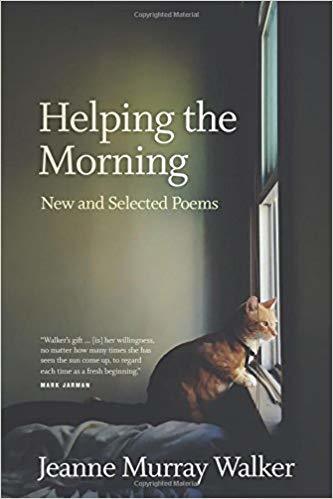
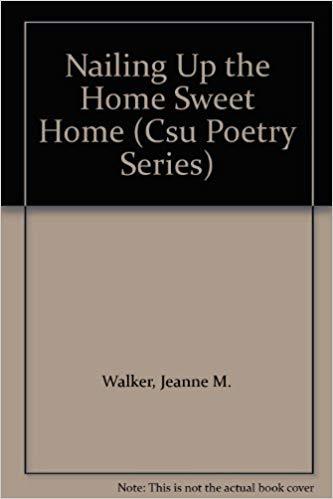
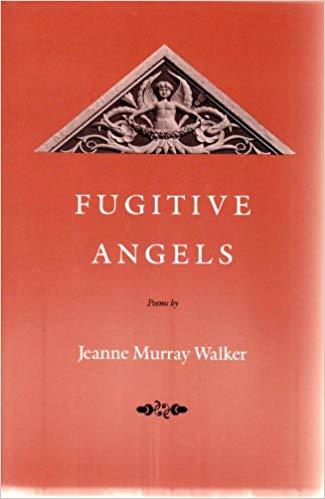
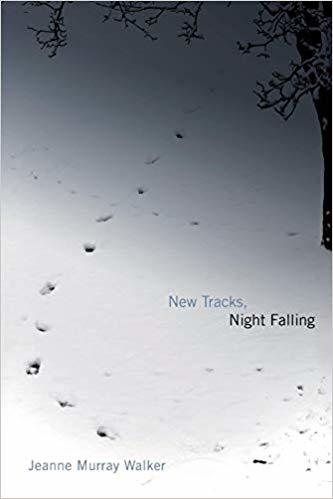
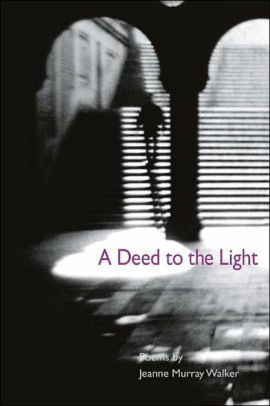

Dreaming of Stones
Christine Valters Paintner's new collection of poems Dreaming of Stones has been published by Paraclete Press.
The poems in Dreaming of Stones are about what endures: hope and desire, changing seasons, wild places, love, and the wisdom of mystics. Inspired by the poet's time living in Ireland these readings invite you into deeper ways of seeing the world. They have an incantational quality. Drawing on her commitment as a Benedictine oblate, the poems arise out of a practice of sitting in silence and lectio divina, in which life becomes the holy text.




